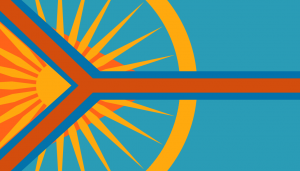Osureko
| Osúrekõ | |
|---|---|
 | |
| Total population | |
| 6.5 million (2012) | |
| Regions with significant populations | |
| Eastern Ekuosia | |
| 6.1 million | |
| 300,000 | |
| 120,000 | |
| Languages | |
| Osuri, Adzamasi | |
| Religion | |
| Quurožarq | |
Osureko or Osurekon, natively /ɔ̀súɾèkɔ̃̀/, sometimes also called Osuri (the name of the language and the adjectival form of the ethnic group), and sometimes Qãnîkõ, is an ethnic group primarily living in the Tabiqan provinces of Osuria and Ūrüd and surrounding regions in Povania and Ebo Nganagam. They are by far the most populous of the four Kõ peoples.
Etymology
Osúrekõ means "colourful people." A calque of an exonym used by Adzamic traders (tarqoonai), in reference to the bright clothing and painted houses of the group, it was adopted to refer to the Osurekõ specifically after the splintering of the various Kõ groups.
Osuri separatists and some other groups prefer the term Qãnîkõ, meaning "valley people," direct reference to their descent from the Tlandin (Qãnî) Empire. However, the term is considered loaded by many, and seen as an extremist, ethno-nationalist identity.
History
The Osureko are the main descendant group of the Kõ people and the Tlandin Empire in the Osuri Valley. The Tlandin Empire was small but powerful and lasted over two thousand years, from BCE 2400 until shortly after AD, when it was largely overtaken by the growing Adzamic Empire. Holdout Kõ Nation enclaves existed within the Adzamic Empire for almost a thousand years, during which time the separated Kõ groups developed into distinctive sub-groups, including the Osurekõ.